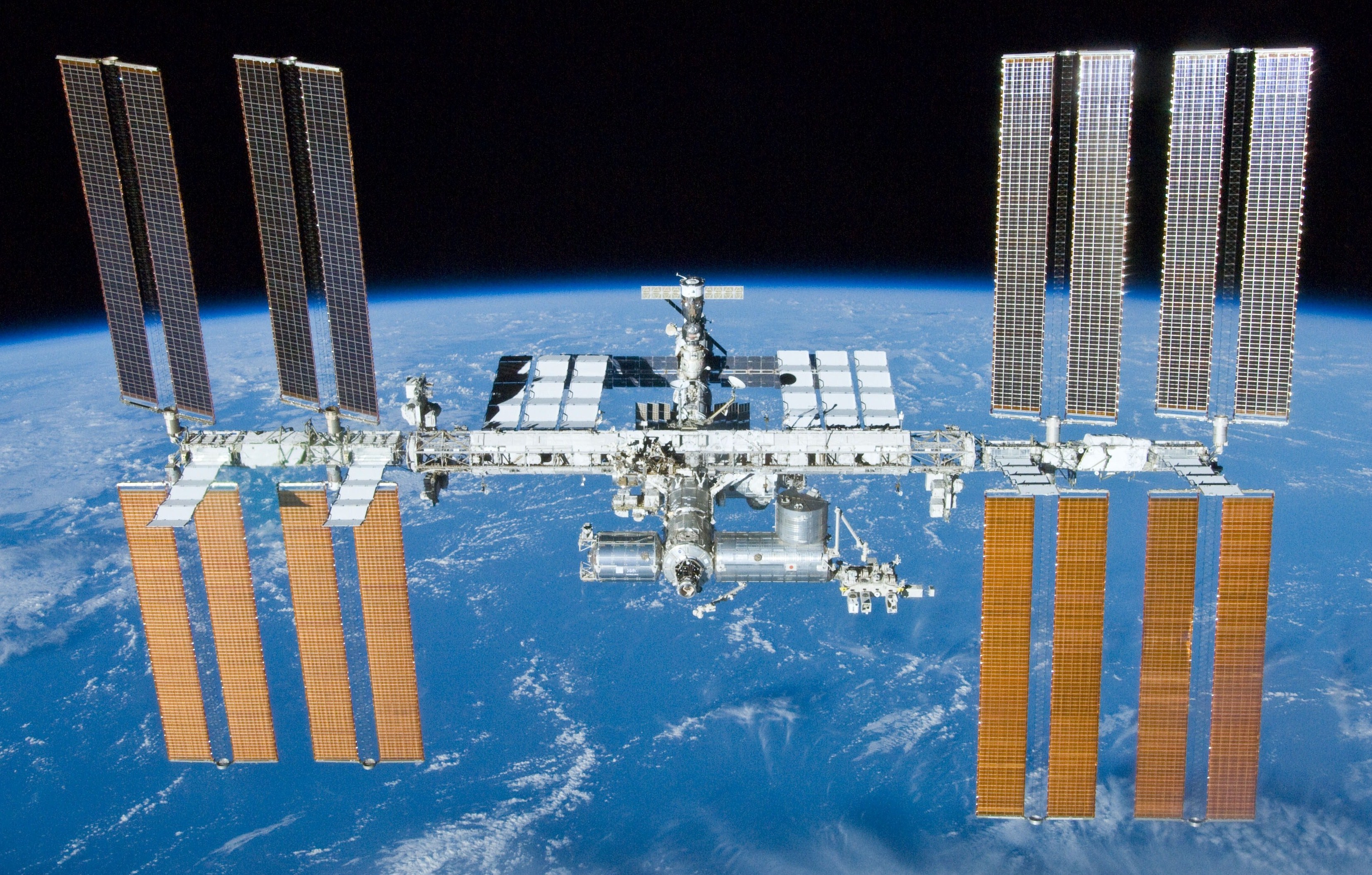By NASA/Crew of STS-132 - http://spaceflight.nasa.gov/gallery/images/shuttle/sts-132/hires/s132e012208.jpg
(http://spaceflight.nasa.gov/gallery/images/shuttle/sts-132/html/s132e012208.html), Public Domain, Link
We have seen on TV that astronauts float weightless in the International Space Station (ISS), and during spacewalks. In fact, the ISS serves as a microgravity research laboratory in which crew members conduct experiments in biology, physics and other fields. Microgravity is more or less a synonym of weightlessness and zero-g (zero gravitational field strength).
Nevertheless, the ISS maintains an orbit with an altitude h of between 330 and 435 km so, according to Newton's law of universal gravitation, the gravitational field strength g in the ISS is:
Taking into account that the gravitational field strength at the surface of the Earth is g=9.8 m/s^2, we conclude that things and astronauts inside the ISS weigh only a 10% less than they do on Earth! The weight is almost the same! How is this possible?
Please, explain your reasoning. You can post your attempted answers in the comment box below. Please, do not use Facebook or Twitter to give your answers.



They are in free fall towards the Earth. Alas they have also a forward speed, they orbit the Earth instead of crashing.
ReplyDeleteGood! Things and astronauts inside the ISS do weigh, and that weight makes them have a free fall acceleration towards the Earth, which in this case is mainly centripetal because this acceleration is almost perpendicular to the velocity vector they have. That means that they are not changing their speed but the direction of the velocity vector. As a result they revolve around the Earth.
DeleteThe ISS is also orbiting the Earth. The point is that, according to the law of the equality of the inertial and gravitational mass (which is a consequence of the equivalence principle of the theory of general relativity), both the ISS and the things it contains should have exactly the same acceleration, no matter what mass they have. This acceleration is g=8,87m/s^2 for every object located at that altitude.
Since astronauts have the same acceleration as the ISS, the relative acceleration of the astronauts with respect to the ISS is zero. That is why they seem to float weightless.
This is a very useful cognitive conflict in order to introduce students to principle of equivalence and the law of the equality of the inertial and gravitational mass in junior and senior years (11th and 12th grades).